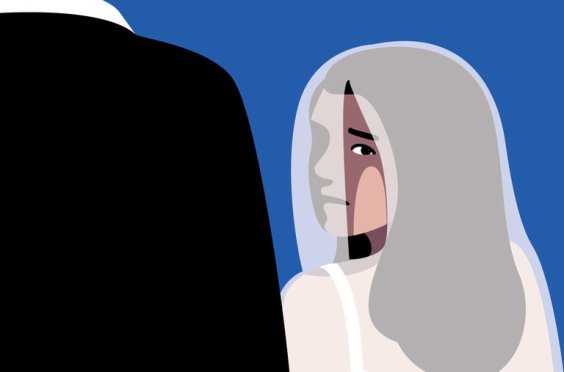By Nicholas Kristof
For years, the United States has campaigned against child marriage around the world, from Guatemala to Zimbabwe. But we should listen to ourselves: Forty-five states in America continue to allow girls and boys under 18 to wed.
Girls as young as 10 are occasionally married quite legally in the United States. Nine states have established no absolute minimum age for marriage.
A study this year found that nearly 300,000 children — meaning age 17 and younger — were married in the United States from 2000 to 2018. An overwhelming majority were 16- or 17-year-old girls, on average marrying a man four years older. But more than 1,000 were 14 or younger, and five were only 10 years old. Some were wed to people far older.
“No one asked me for consent,” remembered Patricia Abatemarco, who as an eighth-grader was married just after her 14th birthday to a man who was 27. “There was nothing romantic about it. I wasn’t in love with him. I didn’t have a crush on him. I was afraid of him.”
A judge in Florence, Alabama, married the couple in the courthouse, and then the couple went to the park outside — where the new bride spotted a playground and left the groom to play on the jungle gym.
Abatemarco, now 55, said the path to this marriage began when she was 12 and living in a middle-class home. Her parents were secular, but she had become quite religious and, during a personal crisis, sought help from an evangelical Christian telephone hotline. A counsellor, Mark, showed up and offered free counselling services; these became increasingly intense, she said, and he began to rape her repeatedly.
At 13, she became pregnant by these rapes. She didn’t know what to do, but Mark and her mother favoured marriage. This solved their problems: For Abatemarco’s mother, it averted the stigma of an out-of-wedlock baby in the house, and for Mark, it allowed him to dodge rape charges. Abatemarco desperately wanted to keep the baby, in hopes of having someone to love and comfort her, and her mom told her this was the only way she could do so.
While this happened decades years ago, similar reasoning leads to many youthful marriages today.
I’ve been writing about child marriages in the United States since 2017 when I came across the case of an 11-year-old girl, Sherry Johnson, who had been forced to marry her rapist in Florida. Child marriage was then allowed in some form in all 50 states.
Now, thanks in part to heroic work by an advocacy organization, Unchained at Last, five states have completely barred marriages by people under 18: Delaware, Minnesota, New Jersey, Pennsylvania and (just this month) Rhode Island. New York has passed a similar bill that is awaiting the governor’s signature.
The states that allow child marriages mostly do so in particular circumstances, such as with the permission of a parent and a judge. These safeguards don’t work very well. The marriages sometimes involve a girl, perhaps pregnant, marrying an older man who may be her rapist.
The new study found that 60,000 of the child marriages since 2000 involved couples with a large enough gap in ages that sex would typically be a crime.
“The marriage licence became a get-out-of-jail-free card in most of those states,” said Fraidy Reiss, a victim of forced marriage who founded Unchained at Last.
There are, of course, 17-year-olds who fall deeply in love and can handle a marriage. We can understand that if a girl becomes pregnant, the couple may prefer to marry right away. But it’s complicated: The legal system withholds many rights from people under 18, so a married 17-year-old can become trapped in a Kafkaesque nightmare.
If the marriage sours, an underage girl will often not be accepted at a women’s shelter. She will have difficulty retaining a lawyer to get assistance. Astonishingly, she may even have trouble getting divorced, because children often cannot initiate a legal proceeding without going through a guardian. And if a minor flees a violent husband, the police may send her right back to her abuser.
That’s what happened to Abatemarco.
Her marriage at 14 didn’t work. Within months, Abatemarco said, Mark began beating her almost daily and sometimes the new baby as well. (Mark died in 2008, so I don’t know his version of events.)
One night, she said, she fled a beating and was walking on the road about midnight with her baby in a stroller. A police officer stopped her for violating curfew, drove her and the baby back home, gave a copy of the written warning to her husband and then drove off.
“My husband then beat me,” Abatemarco said.
Eventually, Abatemarco fled for good and put her baby daughter up for adoption. With the help of her parents, she was able to get a divorce — on a school day, with enough time to catch her 11th-grade English class.
The United States is quite right to campaign to end child marriage in Bangladesh and Yemen. Let’s do the same at home.
-New York Times


